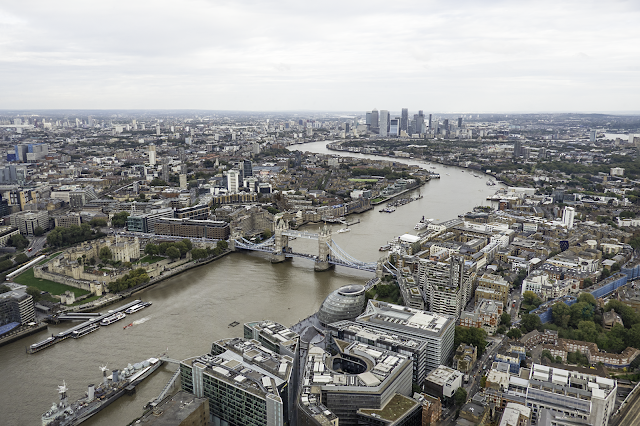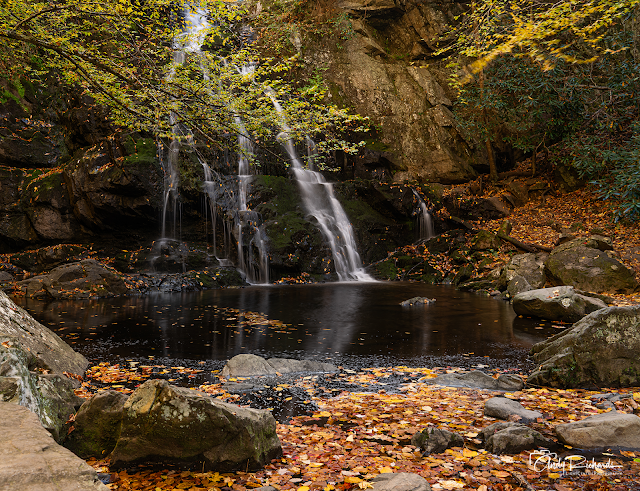 |
| Cliff Walk - Newport, Rhode Island Copyright Andy Richards 2025 - All Rights Reserved |
THE WORD, "perspective," of course has different meanings. In photography we most often talk about it literally. By the "Oxford" definition, "perspective" in an image refers to the height, width, depth, and position of elements of a composition, in relation to each other when viewed from a particular point (mostly paraphrased from the #1 definition in the Oxford Dictionary). Perspective in photography is mostly affected by where we stand, the focal length lens we use, and camera position.
If you just logged on to the internet for the first time within the past couple years, you would be excused if you concluded that "AI" is a brand-new, world-changing phenom, but it really isn't
THE DICTIONARY has another definition (#2) however. It references a thinker's point of view. I find it fascinating how that definition intersects with photography. The main thrust of this post is about the latter kind of perspective. And it probably won't shock the reader to find that it is about a currently somewhat controversial subject: so-called "AI," or artificial intelligence. If you just logged on to the internet for the first time within the past couple years, you would be excused if you concluded that AI is a brand-new, world-changing phenom. It really isn't. If you want to stretch things a bit, you could argue that AI in a very rudimentary form, dates back to Leonardo DaVinci in the late 15th century. But that is a bit of a stretch. Today, we think of AI in conjunction with computers and digital imagery and writing. Probably the first mention of "intelligence" connected with computers was in the 1950s (with the term "artificial intelligence" probably first being used in 1955) - so it is not really new.
 |
| Cliff Walk - Newport, Rhode Island Copyright Andy Richards 2016 |
IT CAN be fairly said though, that use of the phrase, "AI" (especially on the internet), has more recently increased exponentially (like so much of technology has - making Kubrick and Clarke's computer: "Hal," prescient). If this acceleration of AI development feels multiple times as fast, it's because . . . well . . . it is (hence the term exponentially). We first started to see it prominently show up in digital processing programs around 2010. My own awareness was with Adobe's then newly introduced "content-aware" technology (first introduced to me by my friend and Photoshop "guru," Al Utzig) - something that changed my world photographically. Realistically, the technology, which compares the image you are working on with 100's of 1,000's of image examples, was around in a more rudimentary (but still astonishing) form for many years before with in-camera metering technology (Nikon introduced its "matrix metering" in 1983). Given this, I find it remarkable that suddenly sometime in 2024, "AI" became a "thing." 😏 Anybody who doesn't think it has been around for a long time is fooling themselves.
I could immediately see as I looked harder at this image, why I had not processed it and put it on my website back in 2016
WHETHER GOOD or bad, Adobe Software has been working as hard as anyone to bring AI digital technology to us. As an Adobe Cloud subscriber, I have been among the early recipients of this technology. Adobe Firefly (described by them as a series of AI technologies including text to image, image expand and image generation, and video technology, among other things, was first released in its Beta version in 2003. Since then, the technology has been systematically incorporated into other programs (for our purposes, mainly Photoshop and Lightroom) as image generation and object removal technology. Again that technology has changed my world. First, it has taken the now aging content-aware fill process a step forward with the new "remove" tool. Second, it has added to the already impressive content-aware crop tool, and added "generative expand." I know, I know. Get it right in the camera. Thats good advice and one of the fundamentals we should strive for. Reality though is that nobody always gets it right in the camera. The new tools open possibilities for "fixing" framing and even composition at times.
 |
| Cliff Walk - Newport, Rhode Island Copyright Andy Richards 2025 - All Rights Reserved |
WE COULD get all into the: "that isn't photography" discussion, but personally, I think that is a waste of time and creative energy. The beauty of photography is that we can have it be what we want it to be. If you want to take the view that it is only photography if it was made in the camera and not processed in any way - that is your prerogative. I won't judge you for it. But I have said it from the beginning of my blogging adventures: In my view, photography is art (unless we get into some very narrow exceptions like reportage or scientific). When I arrive on a scene (sometimes even before), I "see" an image or images (although unfortunately "the image" is sometimes what I don't see). I have a "vision" and my goal is to make that vision my own reality. And it is determinative, I think, that what I "see" is not what you "see." Consequently, many of us will do "creative" edits during our post-processing to attempt to achieve our "vision." AI is becoming part of the toolbox. If you like it, great. If you don't, that's fine too.
We could get all into the: "that isn't photography" discussion, but personally, I think that is a waste of time and creative energy
THE CLIFF Walk image (Newport, Rhode Island) image is really one of those examples of what I didn't see. I thought I did. At the time, I was looking at the Gazebo, and the curves leading up to it. We were walking, shooting handheld (tripods, as you can see, would have probably created a nuisance, as there were many people on the walkway that day). Depth of field was an issue in the foreground, though I don't really find it unpleasant (f8 @70mm for tech-seekers). I "cleaned" it up a bit where there were people who in this case I felt were a distraction/detraction from the image. O.K. Nice image? Maybe. To me, though, it really is kind of ho-hum. In fact in the end, I think it fails. Why? I realized looking at it on screen, that it breaks one of the most fundamental rules of photography. Every image must have a subject. I guess you could argue that the gazebo is the subject. The railing leads up to it (though I certainly have better examples of leading lines). But to my eye, it just wasn't compelling. It reminded me of my very first image critique by my friend, mentor, and then college professor, John Knox. I made a really nicely exposed photograph of a snowy, wooded path. The late afternoon light was beautiful and spread a uniform pattern of shadows from the Birches lining the path on the sunward side, across the path. There was white snow and blue sky up behind the canopy. "Nice" photo. Again, maybe. At the time I was pretty proud of it. I took it to him "for critque" (probably really more for praise if I am being brutally honest). John is a nice, polite man. You may have read this story in my bio. He didn't praise it. Instead he asked me if I wanted him to tell me it was nice, or if I wanted an honest critique. I wanted him to like it (even love it). I wanted the acclimation. Instead, I did the better (for me) thing and asked for the critque (Like Robert Frost, I took the road less travelled by and that has made all the difference). He said the same thing over 50 years ago that I said to myself recently with this image (yeah - some of us are slow learners 😁). The photo lacks a compelling subject. If I had a person in a red jacket walking a golden retriever on the path in front of me, it would have made "just a photograph" into a "picture." I could immediately see as I looked harder at this image, why I had not processed it and put it on my website back in 2016.
 |
| Cliff Walk - Newport, Rhode Island Copyright Andy Richards 2016 and 2025 (original and AI-Generated additions) |
BUT NOW we have "AI." This time I played around with the "Generate Image" feature in Photoshop. I have done this before with wildly varying results. Some may remember the image I posted of a man walking his dog and the dog walking backward. That from Generative AI in Photoshop. As it will, it just keeps getting better, though it still has a way to go. I played with a few different iterations, asking it to "generate" several times. I tried different words in the text to image box. I finally found a couple that I liked well enough to post here. If you look carefully at the details, there is still a ways to go, but it is impressive nonetheless. I liked both the AI results shown here. There were several others that I either didn't like, or worse, turned out horribly. One thing I have noticed is that it does a terrible job with faces. In these images, my text asked for a blond woman in a red jacket walking a golden retriever. I tried a couple variations (but all but the middle one above had the dog walking behind the woman, and I couldn't get the right combo to move the dog up, so after several tries, I gave up 😖). I do like the red against the otherwise drab colored background. I also like the way the woman's hair in both images virtually (see what I did there?) matches the golden retriever's hair. Is it real? Nope. Is that a concern for me? Not in the least. As a sidenote, I just finished reading (the now late) Bryan Peterson's "Understanding Street Photography." One of the things he repeats about situations like this is how he finds a spot like and then waits (sometimes for hours), for something like this to walk into his scene. What are the odds of this very combination appearing? I don't know, but I don't judge them to be very high. I am not that patient most of the time. But now we have "AI." 😂
















.png)














